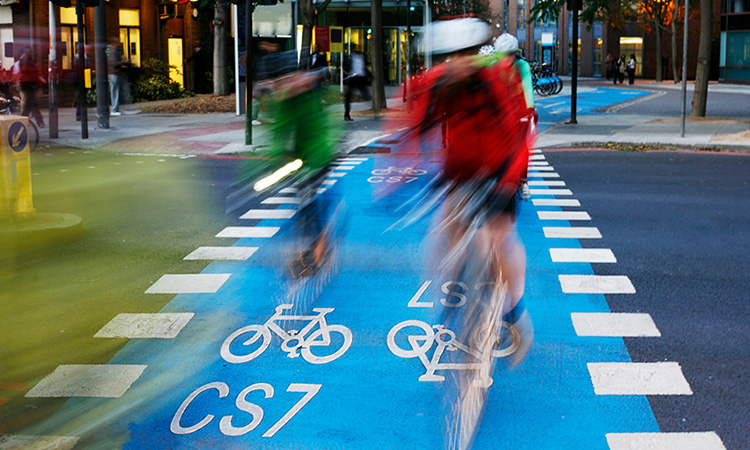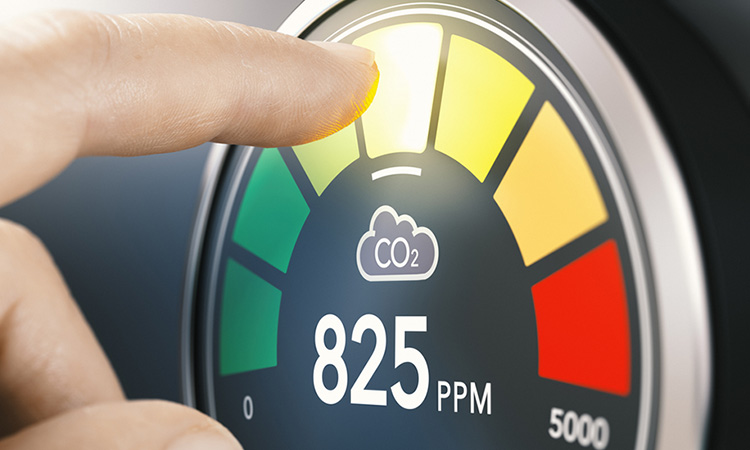Catalysing collaborative measures for better air quality and decarbonisation
- Like
- Digg
- Del
- Tumblr
- VKontakte
- Buffer
- Love This
- Odnoklassniki
- Meneame
- Blogger
- Amazon
- Yahoo Mail
- Gmail
- AOL
- Newsvine
- HackerNews
- Evernote
- MySpace
- Mail.ru
- Viadeo
- Line
- Comments
- Yummly
- SMS
- Viber
- Telegram
- Subscribe
- Skype
- Facebook Messenger
- Kakao
- LiveJournal
- Yammer
- Edgar
- Fintel
- Mix
- Instapaper
- Copy Link
Posted: 4 July 2023 | Dr Suzanne Bartington - University of Birmingham | No comments yet
Suzanne Bartington, Clinical Associate Professor at the Institute of Applied Health Research, University of Birmingham, spoke with Intelligent Transport’s Halimah Haque about the transformative potential of interdisciplinary research and collaboration within the TRANSITION Clean Air Network to address pressing air quality challenges, as well as promote the health and wellbeing of communities across the UK.


Can you please tell us about the TRANSITION Clean Air Network and what you aim to achieve through this programme?
The Transition Clean Air Network spans nine UK universities, the UK Health Security Agency and over 20 cross sector partners. We launched in the autumn of 2020 for a three-year period, although we’ll be continuing our activities beyond this autumn, when we reach our three-year milestone. Our aim is to catalyse the whole transport community towards optimising the benefits of decarbonisation for air quality and health.
Our aim is to catalyse the whole transport community towards optimising the benefits of decarbonisation for air quality and health”
We know that we’re at this really pivotal point, with regard to transport systems. We know that we’ve got to achieve net zero and we also know that there are challenges with air quality. But what we want to do as a community within TRANSITION is to make sure that we get those win-wins for air quality and health, alongside the decarbonisation targets that we want to achieve. We want to get the knowledge and skills in place. We want to get partners working more closely together across different disciplines – social, physical, life sciences – and to align research with policy and practice.
In what way will the TRANSITION network’s interdisciplinary approach facilitate the collaborative development and implementation of inventive measures to tackle air quality issues both inside and outside?
Interdisciplinarity is absolutely key to the network, and to air quality more broadly as well. We know that many of these challenges are complex, so they involve an overlap”
Interdisciplinarity is absolutely key to the network, and to air quality more broadly, as well. We know that many of these challenges are complex, so they involve an overlap. We often talk about that intersect between technology, policy and behaviour when we’re considering solutions. Of course, in order to understand that and deliver effective solutions, we need expertise across those different domains. For example, in technology, we need engineers who can understand how vehicles, trains and buses are designed, how they move, and all of those elements around them. We need the social science community to understand how people behave and respond. How will people behave, for example, with electric vehicle (EV) technology? Will they drive their vehicles further, because they’re cheaper to use? And will there be unintended consequences, as well?
This is where we need to understand policy – and that involves both policymakers, and those who research how policy is implemented. We need that interdisciplinarity. I come from a health background, but I work very closely within TRANSITION with atmospheric scientists and engineers, as well as those who work on social sciences, those with expertise in design, measurement and technology. It’s critical that we include all of those elements.
The collaborative element for that co-delivery of solutions, the reason that we feel that it’s really important to talk to policymakers at a really early stage, is so that we are not disconnected or out of step. In addition, this allows us to ensure that the academic work is feasible to be delivered in practice.
One example was a small project that we funded looking at bus shelter design, which used very advanced computer modelling for roadside air pollution bus shelters. We wanted to make sure that those who had developed the bus shelters, and also the local authority who gives permission for them to be installed, were involved in the project from the outset. This is because the last thing that we wanted was an academic solution for the design or location of a bus shelter that wasn’t going to be feasible in the real world. For this reason, it’s really important to nurture co-development at an early stage.


The social science community needs to have a clear understanding of how people behave and respond. How will people behave, for example, with electric vehicle (EV) technology?
Can you share some of the specific challenges that the TRANSITION programme will address, as well as what evidence-based solutions you anticipate will be developed?
One of our key themes was characterising emerging air quality challenges and risks. We held a launch workshop early on, which brought together the community to identify these challenges. We came up with a number of different areas where we thought we need to have more work done.
For example, we identified that no single approach was going to be effective. We need a holistic and joined up approach, and we also need to strive towards health-based recommendations. At the moment, air quality is very much regulated by legal objectives which are out of step with our scientific knowledge of the harms on health. So, we want to frame our work in health-based knowledge.
We want public transport to be the front and centre of decarbonisation. We need to be talking about how to best achieve modal shift and we need to understand why people are and are not choosing to use public transport”
In terms of other key elements, we identified road transport. Non-exhaust emissions are a key emerging risk. We know that they come from brake, tyre and surface road wear – and they are something which electric vehicles will not solve in their own right. In fact, it might even make the challenge even more difficult due to the weight of vehicles. So, we wanted to catalyse research into non-exhaustive emissions.
We want public transport to be the front and centre of decarbonisation. We need to be talking about how to best achieve modal shift and we need to understand why people are and are not choosing to use public transport. We need to get a better public understanding of the consequences of those choices, and the choice of reliance on personalised car transport, which we know is the most polluting form of transport in terms of greenhouse gas (GHG) emissions.
We focus on surface transport, which is essentially bus, road and rail. Active travel, such as walking and cycling, is often overlooked in discussions, yet shifting shorter trips to these modes of transportation has the greatest health impact. Thus, we need an evidence based answer to, “How do we reduce those 70% of car trips which are under five miles and how do we shift as many as we can to walking and cycling?”
Finally, consideration needs to be given to built indoor environments, which need to be better designed. Train and bus stations, in particular, fall in a rather grey area with regard to air quality. We are arguing that we need to protect against exposure to air pollutants in those environments, as well.
How significant a contribution will collaboration with cross-sector partners have in the success of the TRANSITION programme and what kind of stakeholders are you currently working with?
We work with public, private and not-for-profit stakeholders, who span local authorities around the country. We have particularly strong relationships with Oxfordshire County Council, Oxford City Council, Sheffield City Council and Coventry City Council, who are all formally a part of our network.
In the realm of transportation, we collaborate with reputable global consultancies and commercial organisations, like TRL, to explore the future of mobility. In addition, we collaborate with air quality consultancies like DustScanAQ, as well as network partners like HS2 and operators such as National Express. Furthermore, we also work with the Office of Rail and Road (ORR), as we need to understand the way in which transport is regulated. Finally, we engage with advocacy organisations operating in the campaign sphere, such as Asthma + Lung UK and Global Action Plan.
We’re proud to work with a really broad set of partners and we’ve found that optimal outcomes have occurred as a result of different partners coming together on various projects. We’ve also funded a number of academic industry partnership projects, and that has been a really successful area of activity.


Active travel, such as walking and cycling, is often overlooked in discussions, yet shifting shorter trips to these modes of transportation has the greatest health impact.
How does funding from the UK Research and Innovation’s Clean Air Strategic Priorities Fund’s Clean Air Programme support the research goals of the TRANSITION programme and what opportunities, but also challenges, does this funding bring?
This funding is, without a doubt, fundamentally important to supporting the programme of research. We are currently in the second phase of the overall Clean Air Programme and, as part of TRANSITION, we represent one of the six networks, each with a distinct focus. For example, among the six networks, one concentrates on addressing air quality in schools, another on housing, and yet another on the built environment. While our primary focus lies in the realm of transport, we maintain close collaboration across all networks, extending our community beyond the confines of TRANSITION itself.
A major hurdle that we face is the limited duration of funding… we are nearing the conclusion of our official three-year period. While we have been granted an additional year, there is no supplementary funding allocated for that duration”
In fact, all of the networks are coming together in July 2023 for a major conference in Birmingham. In this case, the collective strength of the networks surpasses the individual contributions, as we’re able to bring together all of that knowledge and expertise, and then synthesise it.
There are certain common aspects emerging across all of the networks, such as the complexities of indoor versus outdoor air quality and the associated continuum, as well as the unintended consequences of policies.
However, a major hurdle that we face is the limited duration of funding. As I mentioned earlier, we are nearing the conclusion of our official three-year period. While we have been granted an additional year, there is no supplementary funding allocated for that duration.
Another challenge that we have encountered is the time required to establish meaningful relationships. We’ve come up with these research questions, which will now need additional funding to actually answer and deliver. But this investment has been critical in getting the community together, co-ordinated, organised and ready for action.
In your opinion, what are the most pressing air quality challenges that the UK currently faces and what steps can be taken to address them?
The most pressing air quality challenge at the moment will be achieving compliance with the new particulate matter standards… to achieve a 10 microgram annual average by 2040″
In terms of the most pressing air quality challenge at the moment, a key challenge will be achieving compliance with the new particulate matter. This refers to fine particulate matter, which we know is particularly harmful for health. A key challenge will be achieving those long-term targets, which are now enshrined in UK law, specifically, to achieve a 10 microgram annual average by 2040. We are on a trajectory to do that, but the health argument is that we should actually be aiming for below that. The World Health Organization (WHO) actually recommends an annual average of five micrograms. The challenge lies in the pursuit of continuous improvements, as we strive to meet and surpass these benchmarks.
It’s those smaller, more difficult gains that still need to be made – and they become ever more marginal. We do need to focus on particulate pollution. To date, UK transport policy has very much focused on nitrogen dioxide, but we know that many of the interventions – like clean air zones, for example – have very minimal, if any impact, on particulate pollution. So, that is a real key challenge.
Indoor air quality, as emphasised by the Chief Medical Officer in his annual report published in December 2022, represents another crucial area of focus. Broadly speaking, we generally spend 90% of our lives indoors in this country, and our exposure is actually influenced by that indoor environment.
We know from studies, including TRANSITION research, that those exposures can be really high in transport hotspots. I mentioned bus and rail stations; we’re only just beginning to understand the peak pollutant concentrations that people are exposed to when they’re travelling through those environments. This is a really big challenge since, as a public space, it doesn’t fall under ambient air quality legislation. Some of it sits in occupational health legislation, but there’s a large area which essentially isn’t regulated at present.
Finally, I mentioned non-exhaustive emissions, but it is important to consider the broader concept of unintended consequences. For example, diesel was originally conceived as a climate mitigation measure to reduce carbon emissions from vehicles. Unfortunately, it had the consequence of nitrogen dioxide emissions, which led to some of our difficulties in urban areas that we’re still now spending money on trying to solve. We need to avoid repeating mistakes of the past.


How do you plan to monitor and evaluate the impact of the TRANSITION programme on air quality and public health and what metrics will you use?
We have several specific deliverables that we are required to produce and report to our funding organisation. One of these includes a series of academic publications. As mentioned earlier, we initially provided funding for five small-scale projects in the fields of innovative arts and science, focused on discovery and innovation. From these projects, we selected two to receive additional funding in order to achieve tangible impact.
Our focus is on measuring the impact of our publications. We aim to determine if these publications have been cited in new policy guidance and whether they have influenced decision-making processes”
So, a significant aspect of our success measurement revolves around our output. But, beyond that, we need that knowledge to be used in practice. That is the more challenging area, in terms of follow through. Currently, our focus is on measuring the impact of our publications. We aim to determine if these publications have been cited in new policy guidance and whether they have influenced decision-making processes within local authorities.
We were very successful with getting our research cited in the Parliamentary Office and Science Technology note on urban air quality. Furthermore, we also engaged very closely with the Chief Medical Officer when preparing the annual report. So, we were very much able to make the case around the importance of transport hubs.
Ultimately, we’d like to see the term ‘zero-emission vehicle’ taken out of popular circulation. We know that, at the moment, both national and local government have a tendency to use this term. We have been very vocal in making the case that no vehicle is zero-emission. Whether they’re electric, hydrogen or another alternative fuel technology – there are emissions. They’re just non-exhaust, potentially, if you’re talking about electric vehicles.
What role do you see for policy and public engagement in promoting the adoption of evidence-based solutions that are developed through the TRANSITION programme, and how will you engage with these stakeholders?
We have organised several public and policy engagement events as part of our initiatives. One notable event was the ‘Beyond The Clean Air Zone’ event held at Birmingham City Library in 2022. During this event, we invited local authority leaders who had practical experience in implementing or planning clean air zones for various areas. We had them in the same room as officers who are responsible for planning and delivery on a technical level, and academics who were undertaking the research around those interventions, along with some representatives of campaigning and civic sector organisations. It’s relatively rare that you get all of those people in the same room, to talk about the topic, which made it a very interesting event.
Following on from that, we are now producing a toolkit to support local authorities. We have also produced a briefing note to talk to politicians in their language about these interventions.
In addition, we have also created some non-exhaust emissions exhibits. This topic of non-exhaust is pretty fundamental in TRANSITION. We had a series of cubes, which show the annual emissions from a car and a bus driving a certain route, so that people can visually see what is coming off, in terms of tyre wear. We’d like to take that out to more places. We also have a quarterly webinar series, which is held online. Our latest webinar was on 15 June 2023, on Clean Air Day, which was about hydrogen and the role that it plays in decarbonising transport.
What are your long-term goals for the TRANSITION programme, and how you see it contributing to the broader efforts to promote clean air and sustainable transport in the UK?
I would like to see TRANSITION continue. We have really strong collaborations that have been built up and established through the programme, and we want that to continue. We’d like to achieve a much more cross-departmental effort at a government level, to avoid the siloed policymaking that we’ve seen in the past.
A focus just on electric vehicles… risks unintended consequences. One critical issue that remains unresolved is the matter of non-exhaust emissions”
We’ve argued very strongly that a focus just on electric vehicles, which has, to a certain extent, been a flagship policy, risks unintended consequences. One critical issue that remains unresolved is the matter of non-exhaust emissions. We also need to think about where these batteries all come from, and where these vehicles end up.
We’ve argued for a holistic approach to be adopted in the UK, and that needs to come from the national government. As already mentioned, we want to shift away from the zero-emission terminology more broadly. We’d also like to see some of our technological advances that we have discovered being put into practice, particularly in local government. These represent major opportunities for us to have real world impact.


Related topics
Active travel, Air Quality, Alternative Power, Public Transport
Related modes
Bikes & Scooters, Bus & Coach, Rail, Walking
Related cities
Birmingham, Coventry, Oxford, Sheffield
Related countries
United Kingdom
Related organisations
Coventry City Council, Oxford City Council, Oxfordshire County Council, Sheffield City Council, University of Birmingham, World Health Organization (WHO)
Related people
Dr Suzanne Bartlington








